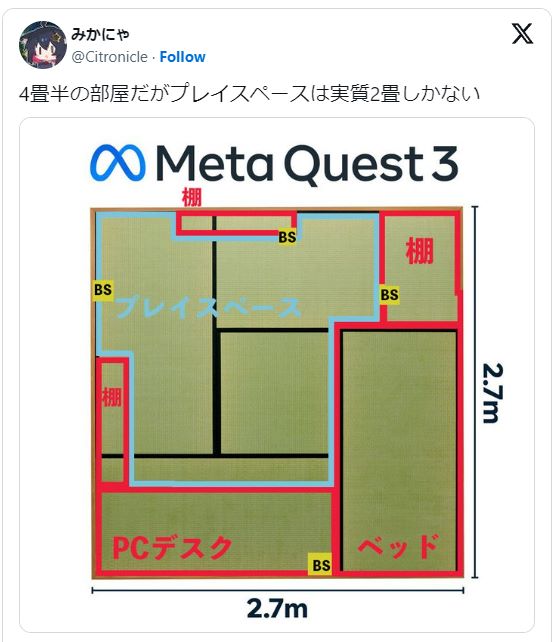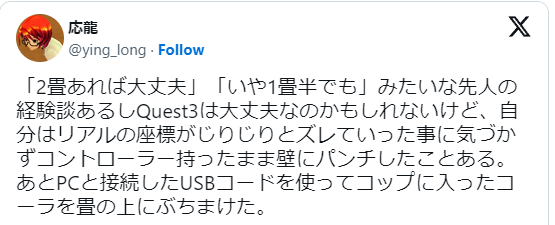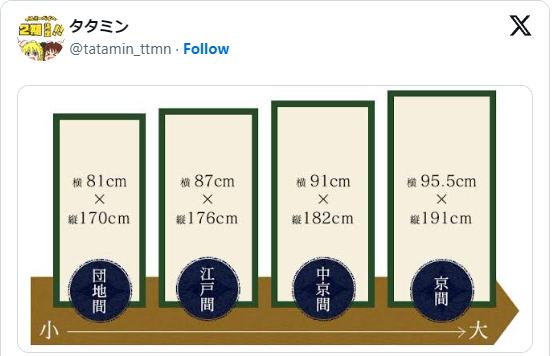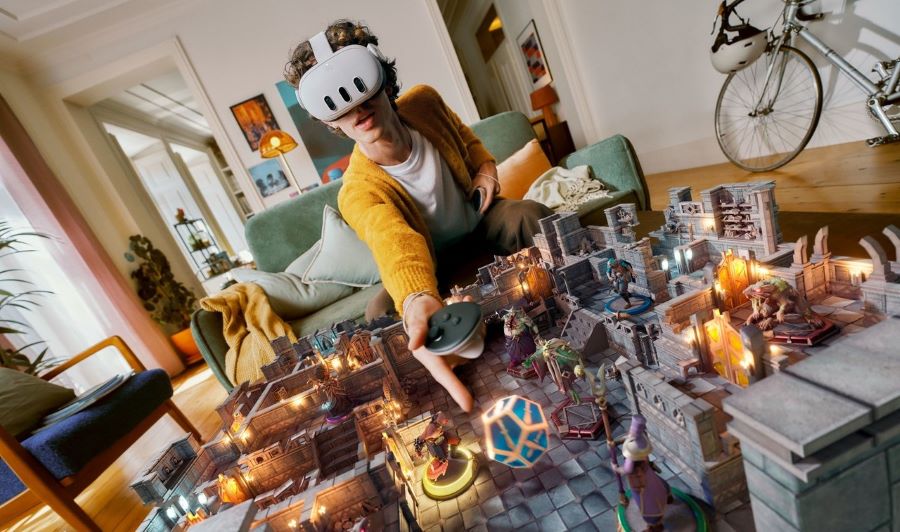Meta Quest Japan’s latest campaign to promote the Meta Quest 3 VR headset has been called out for overestimating the amount of floorspace that most of Japan’s gamers have for VR gaming.
Unless you are playing a VR game that uses the mixed virtual reality feature (which brings elements of the game right into your room- such as Neko Atsume’s cats) it is very easy to accidentally punch your wall or knock into something if you don’t have enough space. Meta Quest’s commercials show people playing in large, spacious rooms- however this is not the reality for many Japanese players- especially those living in city apartments. Japanese houses and apartments tend to be smaller than those in Western countries- data from February 2024 reveals that the average apartment size in Tokyo, for example, is only 422 square feet (in comparison, New York has the smallest average apartment size in the USA at 702 square feet).

It seems that Meta Quest has noticed this, as their new campaign for Japan announces that you only need space equivalent to a 4½ mat room (2.7×2.7meters) to use the new Meta Quest 3 VR headset, which launched in October last year. They are even holding a promotional event in Shibuya, Tokyo today- enabling people to try the headset for themselves in a 4½ tatami mat room. Tatami mats are traditional Japanese flooring, and although other types of flooring are more common in Japan nowadays, room sizes in apartments and houses are still described by unit of measurement based on how many tatami mats can fit into a room.
However, Japanese commenters on X were quick to call out Meta Quest for overestimating the amount of space that the typical gamer in Japan has to play VR titles. Many drew their furniture on top of Meta Quest’s tatami room illustration- highlighting how little space they would have left over for VR activities.


However, others were more cautious, pointing out that although it may be possible to play VR games in such small spaces- accidents can easily happen.

As an aside, a poster with tatami mat knowledge pointed out that if you were playing in an actual room with tatami mats the size will vary depending on the region of Japan and type of housing. Danchima, the smallest type of tatami mat that is commonly used in apartments and social housing, would give you a 4 ½ mat room size of only 2.5 by 2.5 meters. On the other end of the scale, Kyoma mats sometimes used in and around Kyoto and western Japan, would result in a room measuring almost 2.9 by 2.9 meters. It seems Meta Quest has gone with the median size of 2.7 meters.

In conclusion, it seems that many VR game players in Japan are used to playing in smaller spaces than recommended by the manufacturer. Those who pick up the VR headset for the first time have a variety of experiences to look forward to, including the upcoming VR version of The Exit 8.
Surprisingly, this is not the only time that games and tatami mats have featured in a discussion lately, as there have been criticisms of the flooring in the Assassin’s Creed Shadows trailer.





